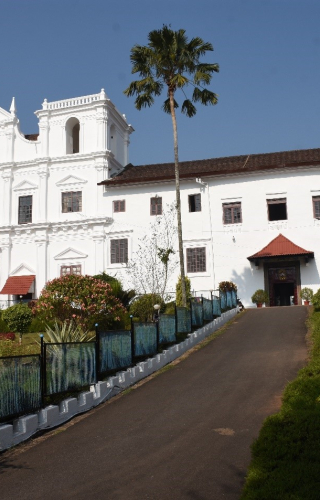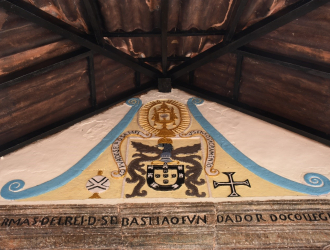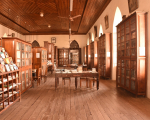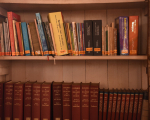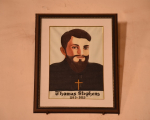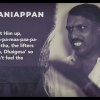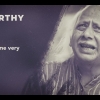Kristapurana (1616) can be read as the earliest retelling of the Christian Bible in a South Asian language. It has a total of 10,962 stanzas and is composed in the Puranic tradition. It was printed in the Roman script in the Marathi language and contains the story of the Bible from the creation until the crucifixion and ascension of Christ. The text is composed in two parts—Paillem Puranna (first Purana; equivalent to the Old Testament) and Dussarem Puranna (second Purana; equivalent to the Old Testament). Its author, Father Thomas Stephens S.J. (1549–1619), was an Englishman who arrived in Goa in 1579 and worked there until his death. One of the ways to retrace the journey of this text is to follow its manuscripts located across various sites in Goa.
Kristapurana’s journey began in the Rachol seminary, which was closely connected to Stephens’s life and work in Goa. Stephens was the rector of the college at Rachol from 1609 until his death in 1619. The seminary has been a centre for religious studies since the seventeenth century.
The college, now known as Patriarchal Seminary of Rachol, was built during Stephens’s time. We understand from Stephens’s letters to his brother and superiors that he was actively involved in the construction and establishment of the college.
While the seminary buildings are of historical importance and the library still stands in its original form, no printed copy of Kristapurana from the seventeenth century is known to exist here. We also do not find any traces of Stephens’s life here, except for a modern artist’s rendition of his image, and recent editions and translations of Kristapurana in the library’s shelves. The seminary is a key site in the cultural history of the region as it was clearly one of the centres of early print technology in South Asia. The seminary is also famous for its numerous paintings and murals depicting scenes from the Bible, Catholic culture and lives of saints. The space that Rachol Seminary holds in this narrative is a symbol of the relationship between power, print technology, and the routes by which knowledge was produced and disseminated, specifically in the context of Goan history. It is also significant because of the conspicuous absence of Stephens and his literary heritage in Goa.
The information we have about the date of publication of Kristapurana and the place where it was printed comes from the handwritten manuscripts that can be found in other institutions in Goa. One of the oldest manuscripts is believed to be the handwritten one preserved at the Pilar Monastery Museum. The monastery, which belonged to Capuchin monks, changed hands several times over the centuries, and is now the centre of the Society of Francis Xavier.
The museum is managed by historian and priest, Father Jose Cosme Costa, SFX. The manuscript is especially dear to him as he, as a young novice priest, found the manuscript and preserved it for years before it was displayed in the museum. He found it lying in a garbage heap and salvaged it, realising that it could be something of value. Father Costa argues that this manuscript was copied by more than one scribe as the handwriting seems to change after every few cantos.
According to Father Costa, ‘Avaswaru 7’ or the seventh canto of the Dussarem Purana could have been written by Stephens himself, as it uses the Greek ‘X’ as shorthand for Christ (see lines 4 and 8 of the right-hand column), which was common among the Catholics of the period. For example, instead of writing ‘Christa Suamiya’, this canto uses ‘Xta suamiya’, leading Costa to believe that this was a pre-print copy in which Stephens wrote some parts himself, while he dictated other parts of the 10,962 verses to other scribes. Local scribes, in Father Costa’s opinion, were not likely to have known the Greek alphabet. This canto is also significant as it is where the birth of Christ is narrated and may have held symbolic importance for Stephens.
The second place where a handwritten Kristapurana manuscript can be found is Krishnadas Shama Goa State Central Library in Panaji, Goa. The English translation of the Portuguese title is as follows: ‘Discourse on the coming of Jesus Christ, our Saviour, into the world; divided into two Treatises, by Fr Thomas Stephens, Englishman, of the Society of Jesus. Printed at Rachol in 1616, with the permission of the Holy Inquisition and Ordinary in the College of All Saints in the Society of Jesus’. Stephens dedicated Kristapurana to D. Frei Cristovao de Lisboa, primate of India.
Thomas Stephens Konknni Kendr (TSKK), located in Alto Porvorim, Goa, is a Jesuit institution set up to promote the usage and growth of Konkani language. Apart from Stephens’s Arte da Lingoa Canarim, which is considered the first grammar of Konkani language, the institute also possesses a printed manuscript of J.L. Saldanha’s 1907 edition of Kristapurana. This undated manuscript of Kristapurana reproduces all the licences of the various editions of the sacred text.
In the 1648 edition of Kristapurana, Father Gaspar de S. Miguel (1595–1649) wrote a tribute to Stephens. The poem, written after Stephens’s death, praises the priest’s saintly nature and poetic skill. All handwritten manuscripts except the Pilar manuscript contain this tribute, giving strength to the argument that the Pilar manuscript could be one of the oldest copies available today. The first four lines of the poem read:
|
Sadhu chaturagu Padre Hea Puranaca adhikary Tomas estevam kavitva sringhari Miravala cangu
|
A saint and a wise man, Is the priest, author of this Purana Thomas Stephens composed a poem, Adorned beautifully
(Translated by the author)
|
The Goa University Library also houses an undated, handwritten manuscript of the text.
Apart from these manuscripts, there are several modern editions and translations of the text that enable readers to discover a text deeply rooted in the landscape of Goa. A study of these manuscripts opens avenues for a critical study of texts, such as Kristapurana, which are key links in the cultural history of Goa. With a steady decline in the number of people who can read the language of these texts now, and the impending physical decay of many of these manuscripts, newer ways of conserving these stories through digital narratives, performances, translations and critical editions are necessary.
[3] O’Malley, The Jesuits: A History from Ignatius to the Present, 27, 68.
Bibliography
Amonkar, Suresh. Christa Purana. Panjim: Directorate of Art and Culture, Government of Goa, 2017.
Bandelu, Shantaram P. Phadara Stiphanskrta Khristapurana: Paile va Dusare. Poona: Prasad Prakashan, 1956.
Drago, Caridade. Christapuran. Mumbai: Popular Prakashan, 1996.
Falcao, Nelson M., trans. Father Thomas Stephenskrut Khristapuran. Bengaluru: Kristu Jyoti Publications, 2009.
———. Father Thomas Stephens’ Kristapurāṇa. Bengaluru: Kristu Jyoti Publications, 2012.
O’Malley, John W. The Jesuits: A History from Ignatius to the Present. London: Rowman and Littlefield, 2014.
Stephens, Thomas, and Joseph L Saldanha. The Christian Puranna of Father Thomas Stephens of the Society of Jesus. Bolar, Mangalore: Simon Alvarez, 1907.
———. The Christian Purana. Marsden Collection. London: School of Oriental and African Studies.
———. Kristapurāṇa (Discurso sobre a vinda de Jesu Christo Nosso Salvador aMundo dividido em dous tratados feito pelo Padre Thomas Estevão Ingrez da Companhia de Jesus. Impresso em Goa com licenca das Inquisicão, e Ordinario no Collegio de S. Paulo novo de Companhia de Jesu. Anno de 1654, Escripto por Manoel Salvador Rebello, Natural de Margão no Anno 1767). N.p, 1767.
Paulo novo de Companhia de Jesu. Kristapurāṇa (The Pilar Manuscript). N.P., n.d.
Paulo novo de Companhia de Jesu. Kristapurāṇa (The M.C. Saldanha Manuscript). N.p., n.d.
Paulo novo de Companhia de Jesu. Kristapurāṇa. N.p, 1907.
Paulo novo de Companhia de Jesu. Kristapurāṇa (The Bhaugun Kamat Vagh Manuscript). N.p.,n.d.
